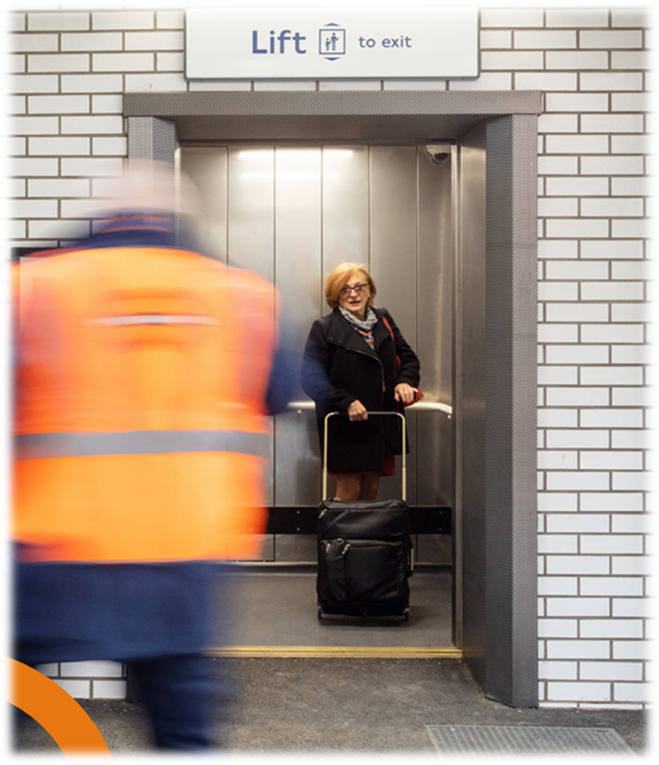LIFT PORTERING DUTIES
Team Briefings

|
Date Issued: |
Drafted By: |
Role: |
|
12/03/2025 |
Joshua Facey |
Customer Experience Stakeholder & Resilience Manager |
|
Issued To: |
||
|
Agency partners |
||
|
Line of Route: |
Station: |
|
|
Entire Network |
All Stations |
|
|
Subject: |
Key Message: |
Category: |
|
Lift Portering Duties |
Effective Customer Assistance |
Customer Service/Accessibility |
Overview
Lifts at our stations serve as the primary function of making the station accessible to everyone, especially people with mobility challenges. They provide an essential alternative to stairs and escalators for passengers who use wheelchairs, have limited mobility, are elderly, or travel with heavy luggage, strollers, or small children.
In the event that a lift on site becomes inoperable, staff will be booked to carry out lift portering duties to mitigate the lack of a working lift. In carrying out these duties, the health and safety of our staff and customers is paramount. Staff carrying out these duties must remain vigilant and ensure that they swiftly attend to all customers in need of assistance.
How:
Appointed staff will be tasked with mitigating the absence of lifts at the station by acting as a lift porter, these tasks include but are not limited to:
- Ensure maximum visibility in the vicinity of the inoperable lift - (When conducting lift portering duties, you must wear a high visibility vest at all times)
- Regularly patrol between the top and bottom landings in correlation with train arrival times to ensure that no customers in need of assistance are missed.
- Offer physical assistance i.e.- helping to carry luggage or assisting with buggies, prams or push chairs. Important, for safety reasons, when assisting with buggies, prams or push chairs, staff must ensure that the customer has removed their child prior to any manual handling. If a customer refuses to remove their child, then assistance cannot be provided.
- Offer wheelchair users TUAG (Turn up and go) assistance, alternative routes, or other means of transport if applicable.
- Use agreed contact method at the station (radios if applicable or station phone) to maintain contact with other station staff regarding necessary lift portering assistance.
- Provide general customer service and journey information.
- Alert station staff if there is an accident and ensure that it is reported via the correct channels.
- Keep station staff and resource control updated on the status of the lift and inform them immediately should the lift be returned to service.
- Collate and produce a report detailing assistance provided throughout the day.
Manual Handling
Whilst carrying out their duties staff should ensure that they work safely and maintain good manual handling technique.
Manual handling is when a person physically moves a load without the assistance of equipment (e.g. a trolley). Manual handling includes the moving of a load by:
- Lifting
- Putting down
- Pushing
- Pulling
- Carrying
Poor manual handling techniques can result in personal injury as well as injury to others. Whilst assisting with any load, staff should maintain good manual handling technique whilst carrying out their duties to ensure their safety, and that of those in their proximity.
Before undertaking manual handling staff should think T.I.L.E:
Task
- The amount of effort required to start or stop the load moving
- The increase of risk over longer distances
- Any obstacles that can create risks as you try to avoid collisions
- Position of hands
Individual
- Different peoples’ characteristics and capabilities
- Factors such as pregnancy or ailments
- Specialised training requirements or instructions
Load
- Weight of the load
- Handles
- Plan the route
Environment
- Space around the load
- Floor surface
- Lighting
- Steep slopes or stairs
We should do everything possible to accommodate our customers who need additional help.
If you require any further assistance, please contact your manager at your earliest convenience
